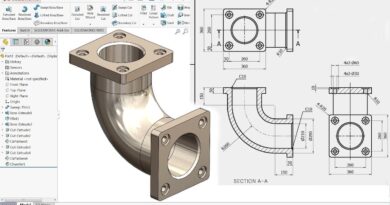How to Build a Profitable Webshop: Choosing the Right Ecommerce Platform in 2025
In the ever-evolving landscape of online shopping, selecting the right ecommerce platform is crucial for building a profitable webshop. As we look towards 2025, it’s essential for business owners to understand the various types of ecommerce solutions available and how they can best meet their specific business needs. This article will guide you through the factors to consider when choosing an ecommerce platform, the types of platforms available, essential features for your ecommerce website, and strategies to optimize your online presence for maximum sales and growth.
What is the Best Ecommerce Platform for My Online Store?
Factors to Consider When Choosing an Ecommerce Platform
When embarking on the journey having a webshop built, one of the first decisions you must make is which ecommerce platform to choose. The best ecommerce platform for your online store will depend on several key factors. First and foremost, consider your business model. Are you planning to sell physical products, digital goods, or services? Different platforms offer varied capabilities tailored to specific types of ecommerce businesses. Additionally, think about your technical skills; some platforms, like Shopify, provide a user-friendly website builder, while others, such as a WordPress website, may require more technical knowledge.
Another important aspect is scalability. As your ecommerce business grows, your chosen platform should be able to accommodate increased traffic and sales without compromising performance. Security features are also paramount; ensuring that the platform you select offers robust security measures, including SSL certificates and secure payment gateways, is crucial for protecting customer data. Finally, consider the costs associated with each platform, including transaction fees, monthly subscriptions, and additional costs for apps or plugins that may enhance your ecommerce site.
Comparing the Best Ecommerce Platforms in 2025
In 2025, the ecommerce landscape is rich with options for business owners looking to establish an online presence. Platforms like Shopify, WooCommerce, BigCommerce, and Magento are among the best ecommerce platforms available. Shopify is renowned for its ease of use and comprehensive ecommerce features, making it a top choice for many entrepreneurs. WooCommerce, on the other hand, is perfect for those who already have a WordPress website and want a customizable ecommerce solution. BigCommerce stands out with its advanced ecommerce features, allowing businesses to scale efficiently, while Magento is ideal for larger enterprises requiring a more robust platform.
To effectively compare these platforms, consider their unique offerings. Some platforms offer integrated payment gateways, while others may require third-party services. Evaluate the level of customer support provided, as this can significantly impact your ability to troubleshoot issues as they arise. Ultimately, the best platform for your ecommerce business will align with your business goals, technical capabilities, and budget.
How to Determine Which Platform is Best for Your Business Needs
To choose the best ecommerce platform for your specific business needs, start by outlining your business goals and requirements. Conduct a thorough analysis of your target market and understand their preferences for online shopping. This insight will guide you in selecting a platform that caters to the features your customers value most, such as mobile optimization and seamless checkout processes.
Next, explore platform demos and trial versions. Most leading ecommerce platforms offer free trials, allowing you to test their features and interface. During this phase, focus on how intuitive the website builder is and whether it meets your design expectations for your ecommerce site. Additionally, engage with online communities or forums to gather feedback from other business owners who have experience with the platforms you’re considering. This firsthand information will be invaluable in helping you determine which platform is best suited for your online store.
What Types of Ecommerce Platforms Are Available for Building an Ecommerce Website?
Overview of Different Types of Ecommerce Platforms
When exploring the types of ecommerce platforms available for building an ecommerce website, it’s important to recognize that they can generally be categorized into three main types: hosted, self-hosted, and marketplace platforms. Hosted platforms, such as Shopify, provide all the necessary tools and hosting services, allowing you to launch your online store quickly and efficiently. Self-hosted platforms like WooCommerce and Magento give you more control and customization options, but require more technical know-how and an external hosting service.
Marketplace platforms, such as Amazon and Etsy, offer a different approach by allowing you to set up shop within a larger online marketplace. This option can be advantageous for new entrepreneurs looking to reach a broader audience without the need for extensive marketing efforts. Each type of ecommerce platform has its own set of advantages and disadvantages, making it crucial to analyze which aligns with your business model and strategic goals.
Pros and Cons of Each Ecommerce Platform
Understanding the pros and cons of various ecommerce platforms will greatly assist you in making an informed decision. Hosted platforms like Shopify offer ease of use, requiring minimal technical skills to set up and manage. However, they often come with higher transaction fees and less flexibility for customization compared to self-hosted solutions. Conversely, self-hosted platforms like WooCommerce provide extensive customization options and control over your ecommerce site but may require technical expertise and ongoing maintenance, which can be daunting for novice users.
On the other hand, marketplace platforms facilitate quick entry into the ecommerce space and provide access to an established customer base. However, they typically charge fees on sales and may limit your branding capabilities. Weighing these pros and cons will help you choose the right ecommerce platform that aligns with your long-term business goals and operational preferences.
Choosing the Right Platform Based on Your Business Model
Your business model plays a pivotal role in determining the right ecommerce platform for your online store. If you are selling a limited number of products, a hosted platform like Shopify might be the most efficient way to build an ecommerce website. For those with a more extensive product catalog or a unique service offering, a self-hosted solution like WooCommerce could offer the flexibility needed to tailor your ecommerce site to meet specific customer demands.
Additionally, consider the nature of your products. If you plan to sell digital goods or subscriptions, look for platforms that specialize in those types of sales. Understanding your business model and how it interacts with ecommerce features will ensure you choose the best platform that supports your success as a business owner in 2025.
How to Build an Ecommerce Website That Meets Your Business Needs?
Essential Features to Look for in an Ecommerce Solution
When building an ecommerce website, it’s critical to identify the essential features that will support your business needs. Look for an ecommerce solution that includes a customizable product page, which allows you to showcase your products effectively. High-quality images, detailed descriptions, and customer reviews can significantly enhance the shopping experience. Additionally, ensure that the platform supports responsive design, making your ecommerce site accessible on all devices, especially mobile, where a growing segment of online shopping occurs.
Another key feature to consider is the integration of different payment gateways. A robust ecommerce solution should offer various payment options to cater to your customers’ preferences, from credit cards to digital wallets. Furthermore, consider built-in SEO tools that can help optimize your ecommerce site for search engines, driving traffic and increasing visibility. These features collectively contribute to a seamless shopping experience, which is essential for maximizing sales.
Best Practices for Website Design and User Experience
Designing an ecommerce website that prioritizes user experience is vital for retaining customers and driving conversions. Start by ensuring that your website layout is intuitive and easy to navigate. Implement a clear, organized menu, categorizing products logically to enhance the user journey. The use of compelling visuals and engaging content can also improve user interaction, encouraging visitors to explore your ecommerce site further.
Additionally, optimizing your site’s loading speed is essential; slow-loading pages can deter potential customers. Regularly testing your website’s performance and making necessary adjustments can help maintain optimal speed. Incorporating best practices, such as clear call-to-action buttons and a streamlined checkout process, will also contribute to a positive user experience, further solidifying your ecommerce site’s success.
Optimizing Your Ecommerce Site for Maximum Sales
To truly build a successful ecommerce website, continuous optimization is key. Start by analyzing user behavior on your ecommerce site using analytics tools. Understanding which products are popular, where customers drop off during their shopping journey, and other key metrics will provide insights into how to enhance your site. A/B testing different elements, such as product images, descriptions, and promotional banners, can help identify what resonates most with your audience.
In addition, consider implementing retargeting strategies to re-engage customers who have shown interest in your products but did not complete a purchase. Email marketing campaigns tailored to previous visitors can prompt them to return and finalize their transactions. By regularly optimizing your ecommerce site based on user data and market trends, you will significantly increase your chances of achieving maximum sales.
What Are the Key Steps to Start Selling Online Successfully?
Setting Up Your Ecommerce Store: A Step-by-Step Guide
Starting an ecommerce business involves several key steps to ensure a successful launch. Begin by choosing the right ecommerce platform that aligns with your business needs, as discussed earlier. Once you have selected a platform, the next step is to register your domain name and set up your online store. This includes selecting a theme, customizing your product pages, and adding essential features like a shopping cart and payment gateway.
After your store is set up, it’s time to add your products. Ensure each product page includes high-quality images, detailed descriptions, and pricing information. Establishing a clear return policy and shipping options is also vital for building trust with your customers. Finally, conduct thorough testing of your ecommerce site to ensure a seamless user experience before officially launching your online business.
Choosing the Right Payment Gateway for Your Ecommerce Business
Your choice of payment gateway can significantly impact your ecommerce business’s success. It’s essential to select a payment gateway that offers security, reliability, and a seamless experience for your customers. Popular options include PayPal, Stripe, and Square, each providing unique features. Consider transaction fees, supported payment methods, and ease of integration with your chosen ecommerce platform when making your decision.
Additionally, ensure that the payment gateway you choose complies with industry standards for security, such as PCI DSS compliance, to protect customer data. Offering multiple payment options can enhance customer satisfaction and reduce cart abandonment rates, ultimately leading to increased sales for your ecommerce store.
Marketing Strategies to Promote Your Online Store
Once your ecommerce store is live, effective marketing strategies are crucial for driving traffic and generating sales. Start by leveraging social media platforms to create brand awareness and engage with potential customers. Consider running targeted ads on platforms like Facebook and Instagram to reach a broader audience. Search engine optimization (SEO) is another powerful tool; optimizing your ecommerce site’s content for relevant keywords will help improve visibility in search engine results.
Email marketing is also an effective way to keep your audience informed about new products, promotions, and updates. Building a subscriber list and sending regular newsletters can foster customer loyalty and encourage repeat purchases. Implementing these marketing strategies will help you establish a strong online presence and drive the growth of your ecommerce business.
How to Evaluate and Optimize Your Ecommerce Business for Growth?
Monitoring Performance: Key Metrics for Your Ecommerce Website
Evaluating the performance of your ecommerce website is essential for identifying areas for improvement and growth. Key metrics to monitor include traffic sources, conversion rates, average order value, and customer retention rates. Utilizing tools like Google Analytics can provide in-depth insights into these metrics, helping you understand how visitors interact with your ecommerce site.
Regularly analyzing these performance indicators will allow you to make data-driven decisions, enhancing your marketing strategies and optimizing your ecommerce store for better results. Understanding customer behavior and preferences will empower you to tailor your approach, ensuring your ecommerce business remains competitive in the marketplace.
Strategies to Optimize Your Ecommerce Store for Higher Conversions
To achieve higher conversions on your ecommerce site, consider implementing strategies such as improving your product page layouts, using high-quality images, and incorporating customer testimonials. A/B testing different elements, such as button placements and promotional messaging, can also uncover what resonates best with your audience. Additionally, simplifying the checkout process by minimizing steps and offering guest checkout options can significantly reduce cart abandonment rates.
Furthermore, consider integrating live chat support to assist customers in real-time, addressing any concerns they may have during their shopping experience. By focusing on optimizing your ecommerce store for higher conversions, you’ll enhance customer satisfaction and ultimately drive more sales.
Adapting to Trends and Innovations in the Ecommerce Industry by 2025
As we move towards 2025, staying abreast of trends and innovations in the ecommerce industry is vital for sustaining growth. Embrace advancements in technology, such as artificial intelligence and machine learning, which can help personalize the shopping experience for customers. Implementing advanced ecommerce features, such as augmented reality for product visualization, can set your business apart from competitors.
Additionally, keep an eye on consumer behavior trends, including the increasing demand for sustainable and ethically sourced products. Adapting your ecommerce business to align with these trends will not only enhance your brand image but also attract a loyal customer base. By continuously evolving and innovating, your ecommerce business can thrive in the dynamic landscape of online shopping in 2025 and beyond.
Q: What are the key ecommerce features to look for when building a webshop?
A: When building a webshop, you should look for ecommerce features such as user-friendly navigation, mobile optimization, secure payment gateways, inventory management, SEO capabilities, and customer support options. These features can help you create a successful online store and grow your business.
Q: Which ecommerce platform is best for small businesses?
A: The best ecommerce platform for small businesses often depends on specific needs. Popular options include Shopify, WooCommerce, and BigCommerce. Each offers various features tailored to different business models, so it’s important to analyze your requirements and find a platform that aligns with your business plan.
Q: How can I drive traffic to my website after launching my online store?
A: To drive traffic to your website, consider using SEO strategies, social media marketing, content marketing, and paid advertising. Engaging with your audience through blogs and newsletters can also help build a following and attract customers to your online store without excessive spending.
Q: Is it better to use a self-hosted ecommerce platform or a store builder?
A: The choice between a self-hosted ecommerce platform and a store builder depends on your technical skills and business needs. Self-hosted platforms offer more control and customization options, while store builders are more user-friendly and require less technical knowledge, making them ideal for beginners.
Q: What should I consider when starting an online retail business in 2025?
A: When starting an online retail business in 2025, consider factors such as market trends, your target audience, ecommerce features, and the scalability of your chosen ecommerce platform. Staying updated with technological advancements and customer preferences is crucial for success.




